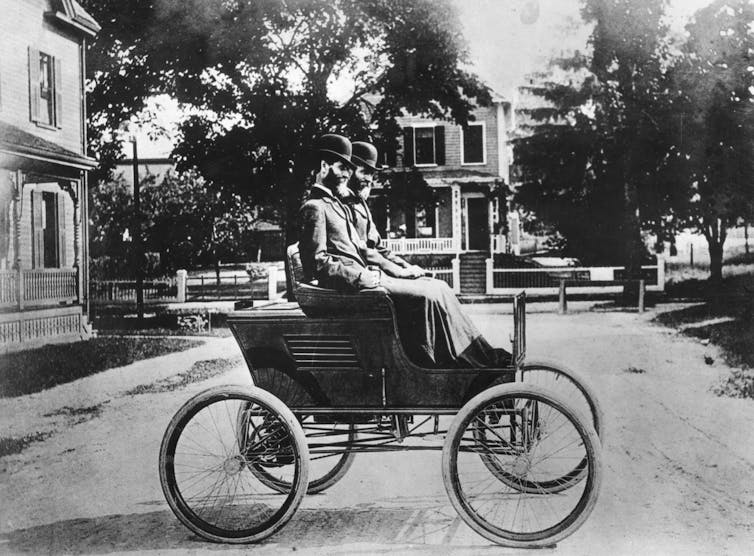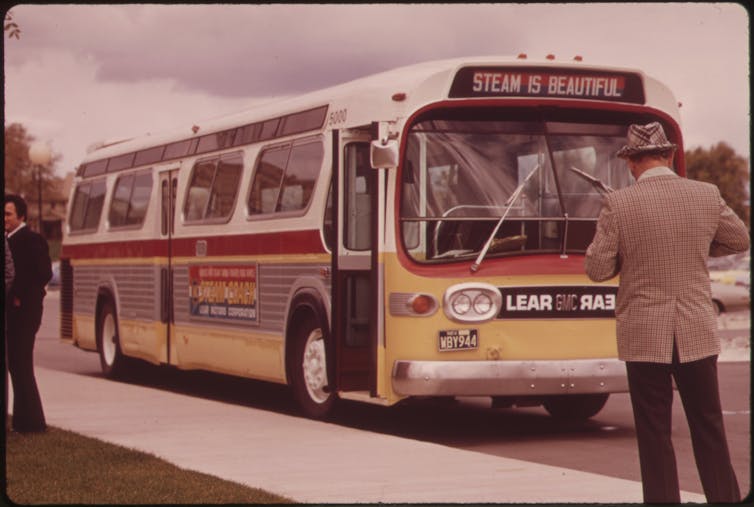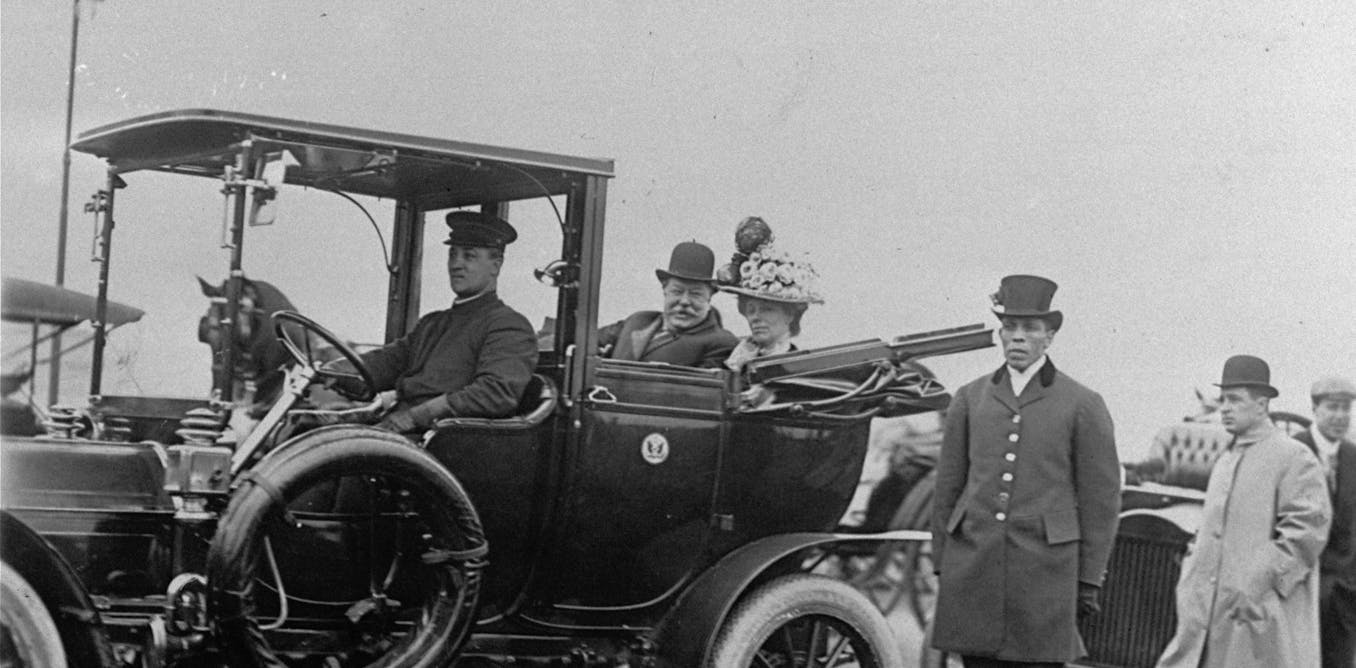[ad_1]

Curious Children is a sequence for kids of all ages. In case you have a query you’d like an knowledgeable to reply, ship it to curiouskidsus@theconversation.com.
May steam-powered automobiles lower the carbon dioxide in our ambiance? – Emma, age 16, Springville, Utah
With the rising severity and frequency of storms, warmth waves and wildfires, and the opposite risks from local weather change, there are a lot of causes to be involved in regards to the quantity of carbon dioxide within the ambiance. Scientists have proven that humanity’s dependancy to burning fossil fuels is inflicting this drawback, which implies it’s time to kick that behavior.
As a result of transportation generates greater than one-fourth of the CO2 emitted by burning fossil fuels, slashing CO2 emissions requires phasing out automobiles powered by gasoline, diesel and pure fuel.
Steam powered lots of the early cars bought round 1900. May the identical know-how play a job once more?
The ‘Stanley Steamer’
The steam-powered automotive turned doable as soon as gasoline and diesel oil changed wooden and coal for the powering of engines.
Inventors Francis and Freelan Stanley, twin brothers, turned automaking pioneers after they improved photographic know-how. In 1898 and 1899 they have been promoting extra automobiles than some other early automaker, and their steam-powered “Rocket Racer” set a velocity report in 1906.
All alongside, automobiles powered by inner combustion engines – the type most in use at present – have been competing with steam automobiles and profitable the know-how battle. Beginning in 1912, electrical starters made them safer and extra handy by changing harmful hand cranks. By 1920, when its meeting strains began producing the Mannequin T with an electrical starter, Ford was promoting a whole lot of hundreds of automobiles per yr.
In distinction, early steam automobiles have been heavy and costly, and it took a very long time to make sufficient steam to get them rolling. Doble Steam Motors, one other early automaker, finally solved this final drawback and plenty of others, however the automobiles remained expensive, and it was too late: The noisy and polluting however less expensive inner combustion engine had received out. The Stanley Motor Carriage Co. ceased working in 1924.
To be clear, as a result of the warmth to boil water to make steam has to come back from someplace, these steam-powered automobiles burned fossil fuels to warmth their water anyway.

PhotoQuest/Getty Photographs
A Nineteen Seventies comeback
Steam energy had one thing of a comeback within the Nineteen Seventies, however not due to local weather issues. Again then, air air pollution spewed by automobiles had develop into a major problem filling cities with smog.
Steam boilers can burn gas extra completely than an ordinary inner combustion engine, resulting in cleaner exhaust that’s largely water and carbon dioxide.
On the time, that was seen as an enchancment.
Among the cities battling air pollution from car exhaust added steam-powered buses to their fleets. This resurgence was short-lived due to the arrival of new applied sciences that might curb air pollution from inner combustion engines.

Frank Lodge/Nationwide Archives at Faculty Park through Wikimedia Commons
Steam’s disadvantage and electrical energy’s benefits
The most important impediment for steam-powered automobiles is that steam isn’t a supply of vitality. Relatively, it’s a supply of energy for the wheels.
Whereas getting round in steam-powered automobiles would possibly make the air cleaner within the drivers’ personal communities, switching to steam-powered engines that proceed to burn gasoline and diesel wouldn’t cut back CO2 emissions.
A unique strategy can doubtlessly remove the necessity to burn fossil fuels for transportation: changing gasoline tanks with batteries to supply the vitality, together with swapping out inner combustion engines for electrical motors to show the wheels.
The discount in carbon emissions shall be far better if automobiles run on electrical energy generated by wind generators, photo voltaic panels or different vitality sources that don’t emit carbon dioxide.

AP Picture/Enterprise Wire
Because it occurs, a few of the first automobiles ever made have been electrical. Producers stopped making these fashions as a result of the necessity to recharge their batteries after quick distances rendered these automobiles much less handy than these powered by fossil fuels.
Battery know-how is so significantly better now that some electrical automobiles can journey 400 miles (640 kilometers) without having to recharge. As a substitute of switching to steam as a supply of energy to assist cut back carbon dioxide emissions, we advocate electrical energy generated from renewable sources.
Hey, curious youngsters! Do you might have a query you’d like an knowledgeable to reply? Ask an grownup to ship your query to CuriousKidsUS@theconversation.com. Please inform us your identify, age and town the place you reside.
And since curiosity has no age restrict – adults, tell us what you’re questioning, too. We received’t have the ability to reply each query, however we are going to do our greatest.
[ad_2]

